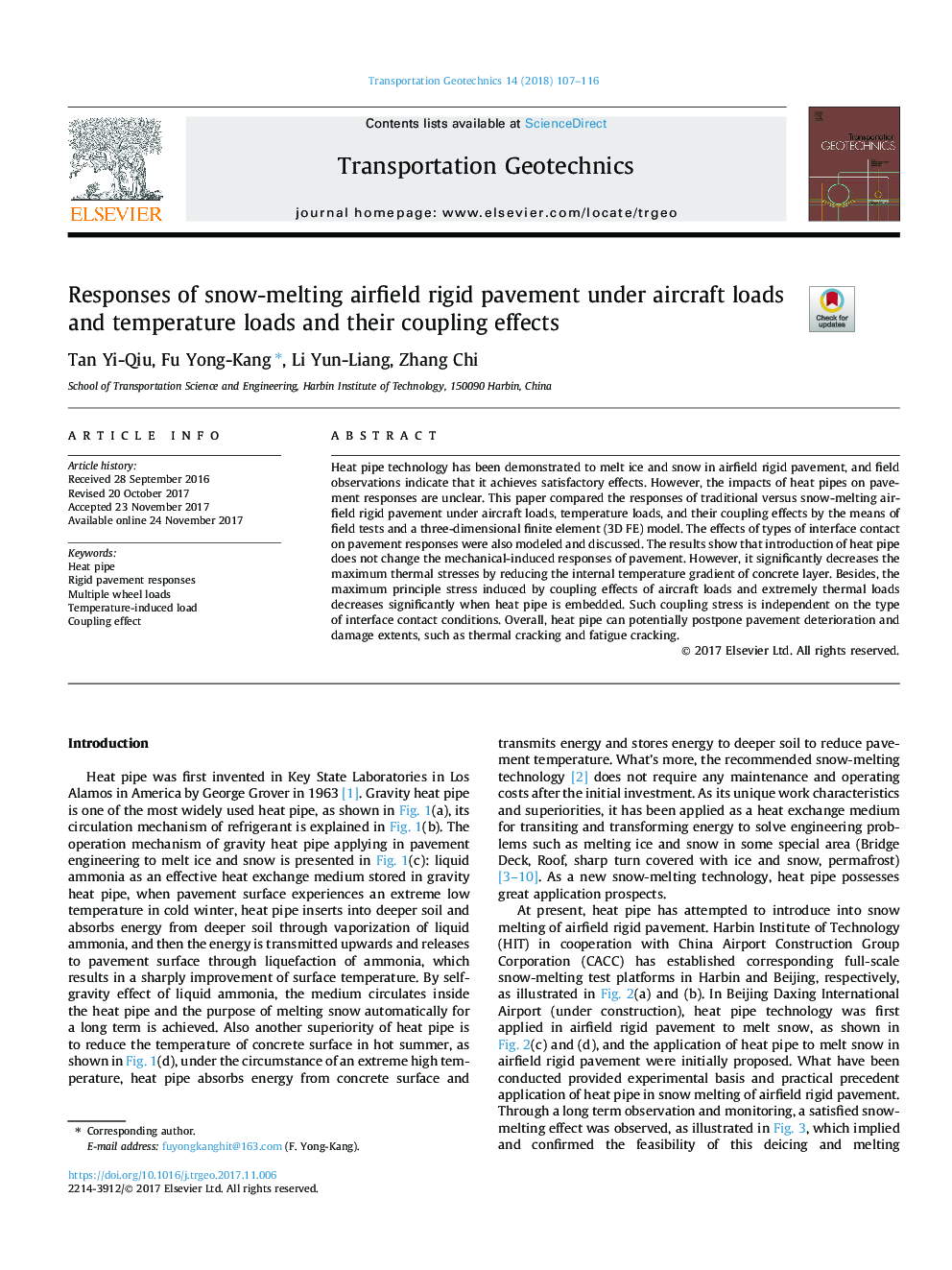| Article ID | Journal | Published Year | Pages | File Type |
|---|---|---|---|---|
| 6779495 | Transportation Geotechnics | 2018 | 10 Pages |
Abstract
Heat pipe technology has been demonstrated to melt ice and snow in airfield rigid pavement, and field observations indicate that it achieves satisfactory effects. However, the impacts of heat pipes on pavement responses are unclear. This paper compared the responses of traditional versus snow-melting airfield rigid pavement under aircraft loads, temperature loads, and their coupling effects by the means of field tests and a three-dimensional finite element (3D FE) model. The effects of types of interface contact on pavement responses were also modeled and discussed. The results show that introduction of heat pipe does not change the mechanical-induced responses of pavement. However, it significantly decreases the maximum thermal stresses by reducing the internal temperature gradient of concrete layer. Besides, the maximum principle stress induced by coupling effects of aircraft loads and extremely thermal loads decreases significantly when heat pipe is embedded. Such coupling stress is independent on the type of interface contact conditions. Overall, heat pipe can potentially postpone pavement deterioration and damage extents, such as thermal cracking and fatigue cracking.
Keywords
Related Topics
Physical Sciences and Engineering
Earth and Planetary Sciences
Geotechnical Engineering and Engineering Geology
Authors
Tan Yi-Qiu, Fu Yong-Kang, Li Yun-Liang, Zhang Chi,
